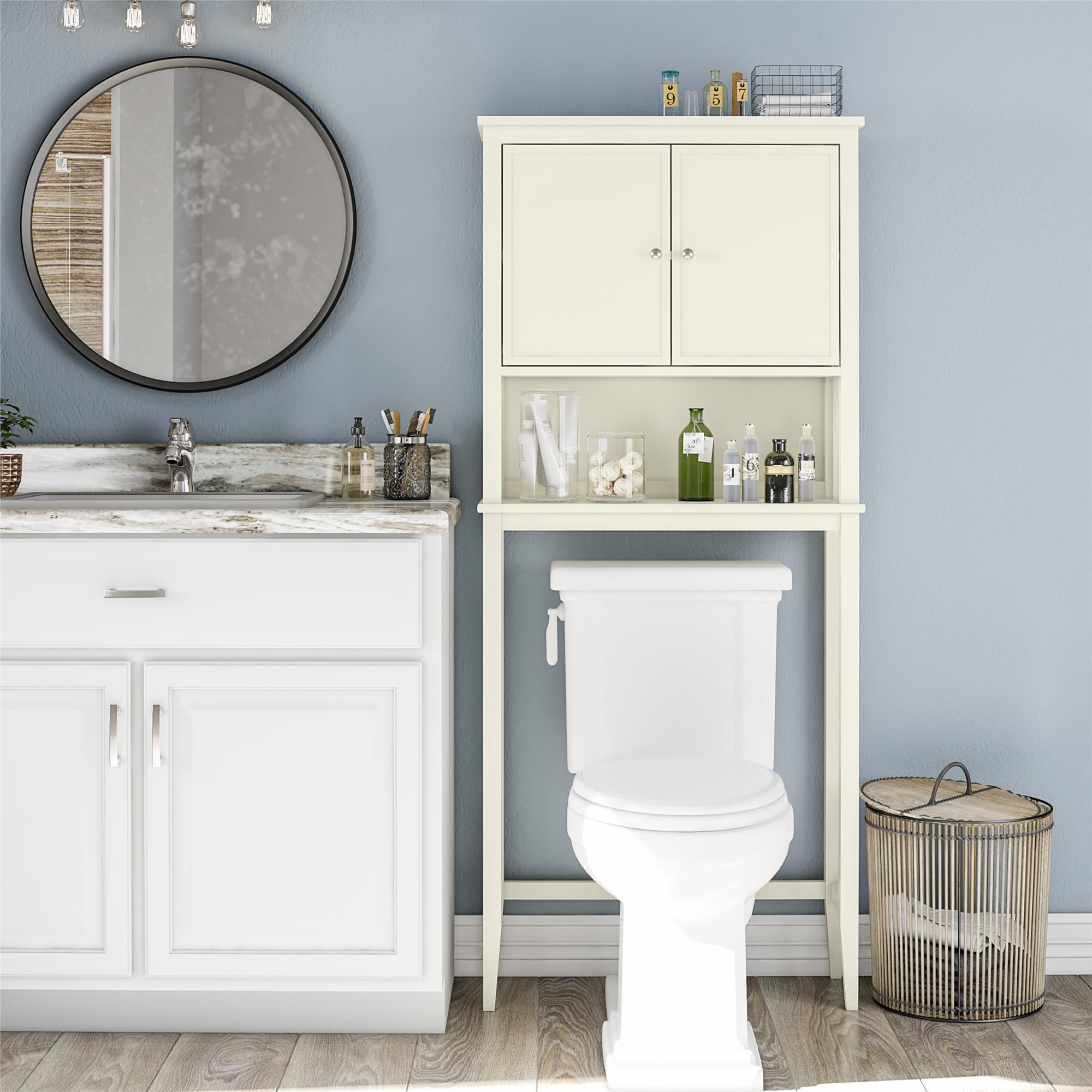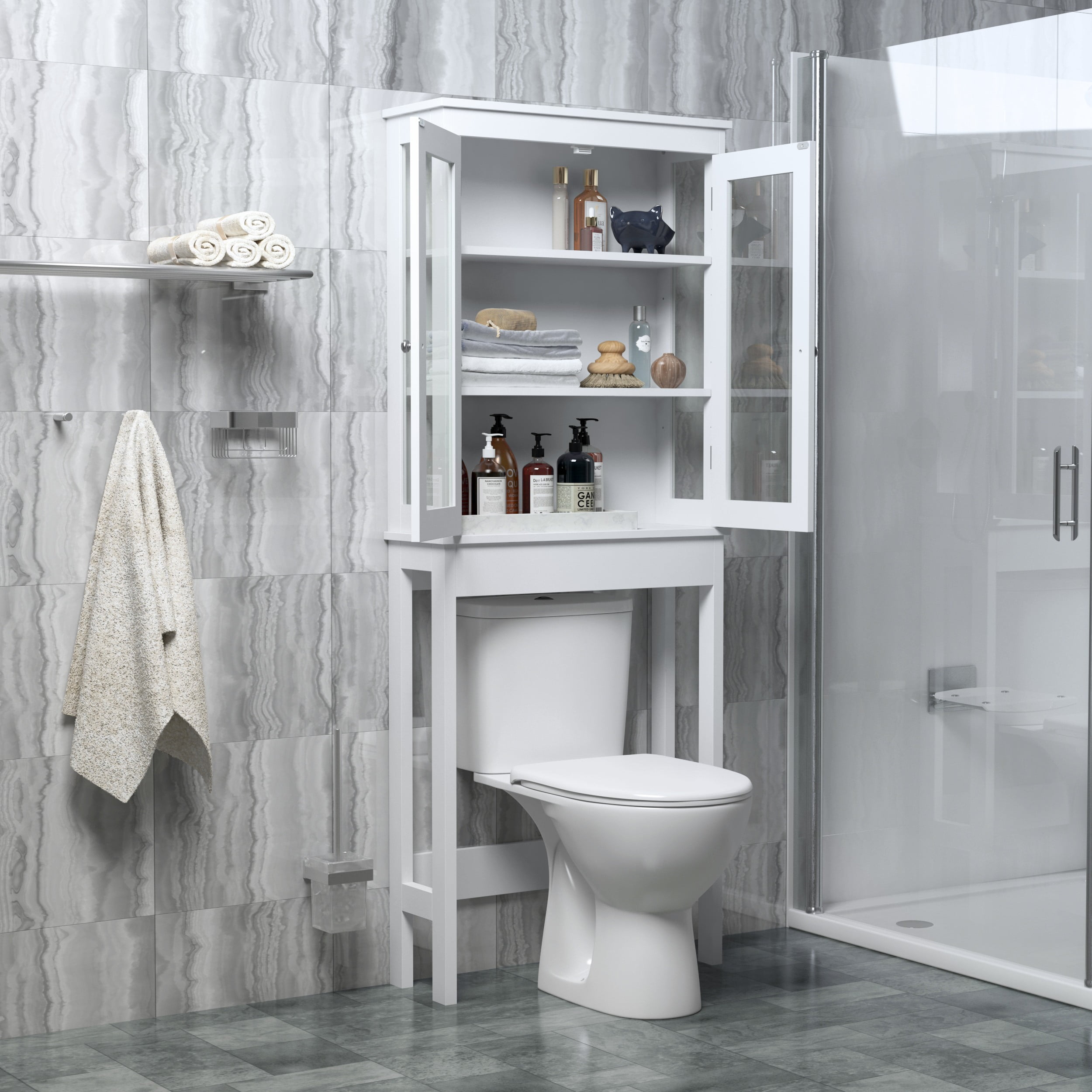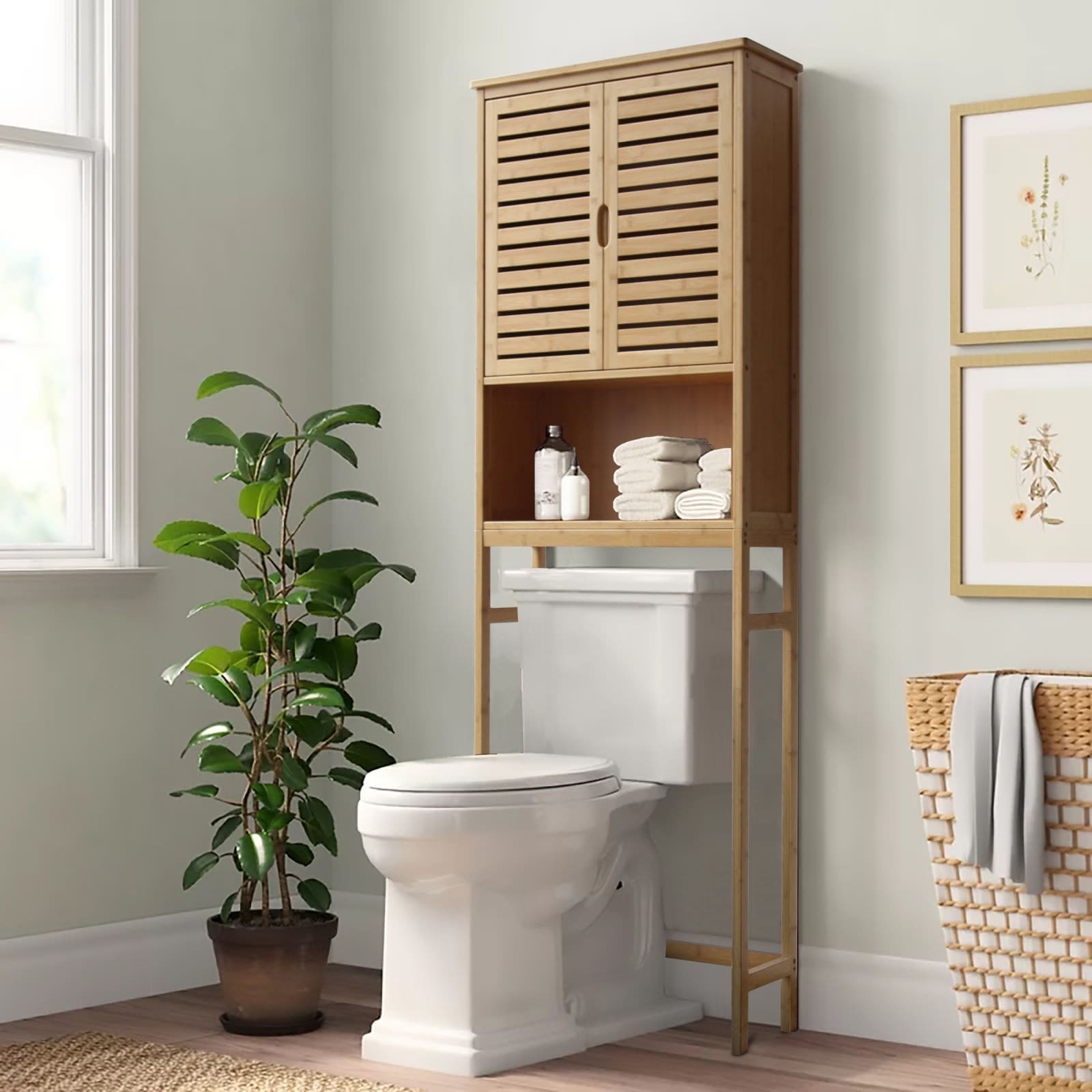Bathroom Toilet Topper Cabinet Functionality and Benefits

A bathroom toilet topper cabinet is a space-saving and stylish solution for adding storage and organization to your bathroom. It is a cabinet that sits atop the toilet tank, providing a convenient location for storing toiletries, cleaning supplies, and other bathroom essentials.
Storage and Organization Advantages
Toilet topper cabinets offer significant storage and organization benefits, effectively maximizing space in your bathroom. These cabinets are particularly advantageous for smaller bathrooms where space is limited. By utilizing the vertical space above the toilet tank, you can keep your bathroom tidy and clutter-free.
- Convenient Storage: Toilet topper cabinets provide a readily accessible storage solution for frequently used items like toiletries, medications, and cleaning supplies. This eliminates the need to search through drawers or cabinets for essential items, saving you time and effort.
- Organized Storage: With multiple shelves, drawers, and compartments, toilet topper cabinets help you organize your bathroom essentials effectively. You can separate items based on their type or frequency of use, creating a more organized and efficient storage system.
- Enhanced Bathroom Aesthetics: A well-designed toilet topper cabinet can enhance the overall aesthetics of your bathroom. It can add a touch of elegance, sophistication, or modern flair to your bathroom decor, depending on its style and design.
Choosing the Right Size and Style
Selecting the appropriate size and style of toilet topper cabinet is crucial for ensuring optimal functionality and aesthetics in your bathroom. Consider the following factors when making your choice:
- Bathroom Size: Measure the space available above your toilet tank to determine the maximum size of the cabinet that will fit comfortably. A smaller cabinet might be suitable for a compact bathroom, while a larger cabinet might be ideal for a spacious bathroom.
- Storage Needs: Assess your storage requirements and choose a cabinet with enough shelves, drawers, or compartments to accommodate all your bathroom essentials. If you have a lot of items to store, consider a cabinet with multiple tiers or compartments.
- Style and Design: Choose a cabinet style that complements the existing decor of your bathroom. Consider factors such as color, finish, and materials to ensure a cohesive and visually appealing look.
Space-Saving Benefits
Toilet topper cabinets offer significant space-saving benefits, particularly in smaller bathrooms. By utilizing the otherwise wasted space above the toilet tank, these cabinets help to maximize storage capacity and create a more organized and clutter-free bathroom environment.
- Vertical Space Optimization: Toilet topper cabinets effectively utilize vertical space, maximizing storage capacity without taking up valuable floor space.
- Reduced Clutter: By providing a dedicated storage solution for bathroom essentials, toilet topper cabinets help to minimize clutter on countertops and floors, creating a more spacious and inviting bathroom environment.
- Increased Functionality: By offering additional storage space, toilet topper cabinets enhance the overall functionality of your bathroom, making it easier to find and access your essentials.
Types of Bathroom Toilet Topper Cabinets

Toilet topper cabinets offer a practical and stylish solution to maximize storage space in small bathrooms. These cabinets come in various styles and materials, catering to different aesthetic preferences and functional needs. Understanding the different types of toilet topper cabinets can help you choose the perfect one for your bathroom.
Styles and Materials
Toilet topper cabinets are available in a wide range of styles and materials to complement different bathroom decors. Common styles include:
- Traditional: These cabinets often feature ornate details, such as carvings, molding, and distressed finishes. They are typically made from wood, such as oak or cherry, and often have a dark stain or paint finish.
- Modern: Modern toilet topper cabinets are characterized by clean lines, minimalist designs, and sleek finishes. They are often made from materials like metal, glass, or high-gloss laminate.
- Contemporary: Contemporary toilet topper cabinets blend elements of modern and traditional styles. They may feature simple lines with subtle details, such as brushed nickel hardware or textured surfaces.
- Rustic: Rustic toilet topper cabinets are made from natural materials like reclaimed wood or bamboo. They often have a rough-hewn finish and may feature exposed knots or grain patterns.
The choice of material for a toilet topper cabinet depends on personal preference and budget. Common materials include:
- Wood: Wood cabinets are durable, stylish, and can be stained or painted to match any bathroom decor. They are often more expensive than other materials.
- Metal: Metal cabinets are lightweight, easy to clean, and resistant to moisture. They are often available in a variety of finishes, such as chrome, nickel, or bronze.
- Plastic: Plastic cabinets are the most affordable option, but they may not be as durable or stylish as wood or metal cabinets.
Features and Functionality
Toilet topper cabinets can have a variety of features to enhance their functionality and storage capacity. Some common features include:
- Built-in Shelves: Shelves provide open storage for toiletries, towels, and other bathroom essentials. They are ideal for maximizing vertical space and keeping frequently used items within easy reach.
- Drawers: Drawers offer concealed storage for items you want to keep out of sight, such as medications, personal care products, or extra toilet paper.
- Combination of Shelves and Drawers: Some toilet topper cabinets combine shelves and drawers for a versatile storage solution. This allows you to store items of different sizes and shapes.
Open vs. Closed Cabinets, Bathroom toilet topper cabinet
Toilet topper cabinets can be either open or closed, each offering distinct advantages and disadvantages:
Open Cabinets
- Pros:
- Increased accessibility to stored items.
- Improved ventilation, reducing the risk of mold or mildew growth.
- A more open and airy feel in the bathroom.
- Cons:
- Items stored in open cabinets may be more prone to dust and dirt accumulation.
- Less privacy for personal items.
- May not be suitable for storing items that need to be hidden from view.
Closed Cabinets
- Pros:
- Provides concealed storage for items you want to keep out of sight.
- Protects stored items from dust, dirt, and moisture.
- Can enhance the overall aesthetic of the bathroom by creating a more polished look.
- Cons:
- May be less accessible than open cabinets, especially if the cabinet has multiple shelves or drawers.
- Can make the bathroom feel smaller and more cramped.
- May require more cleaning effort to keep the interior free of dust and dirt.
Choosing the Right Toilet Topper Cabinet
Selecting the most suitable toilet topper cabinet depends on your specific needs and preferences. Consider the following factors:
- Storage Needs: Determine the types of items you need to store and how much storage space you require.
- Bathroom Size: Choose a cabinet that fits comfortably in your bathroom without obstructing movement or creating a cramped feel.
- Style and Material: Select a cabinet that complements the existing decor of your bathroom.
- Budget: Toilet topper cabinets come in a wide range of price points, so set a budget before you start shopping.
Installing and Maintaining a Bathroom Toilet Topper Cabinet

Installing and maintaining a bathroom toilet topper cabinet is crucial for ensuring its longevity and functionality. Proper installation guarantees stability and prevents damage, while regular maintenance keeps the cabinet looking its best and functioning efficiently.
Installing a Toilet Topper Cabinet
Installing a toilet topper cabinet involves several steps to ensure secure and proper placement. The process requires careful measurements, appropriate tools, and adherence to safety precautions.
- Measure and Prepare the Area: Carefully measure the width of your toilet tank and the space available above it. Ensure the cabinet fits snugly and leaves enough room for the toilet lid to open fully.
- Mark the Installation Points: Use a pencil to mark the location of the cabinet on the wall, ensuring it’s level and aligned with the toilet tank.
- Drill Pilot Holes: Use a drill bit slightly smaller than the screws provided with the cabinet to drill pilot holes at the marked locations. This prevents the wood from splitting during installation.
- Attach the Cabinet: Align the cabinet with the marked points and screw it into the wall using the provided screws and a screwdriver. Ensure the screws are driven in securely but not overtightened.
- Check for Stability: Gently push and pull the cabinet to ensure it’s securely attached and doesn’t wobble. If necessary, tighten the screws further.
Tools and Hardware
Using the right tools and hardware is essential for a successful installation.
- Measuring Tape: For accurate measurements of the toilet tank and available space.
- Level: To ensure the cabinet is installed level and straight.
- Pencil: For marking the installation points on the wall.
- Drill: For drilling pilot holes to prevent wood splitting.
- Screwdriver: For attaching the cabinet to the wall using the provided screws.
Maintaining a Toilet Topper Cabinet
Regular maintenance is key to preserving the appearance and functionality of your toilet topper cabinet.
- Dust Regularly: Dust the cabinet regularly with a soft cloth or feather duster to prevent dust accumulation.
- Clean Spills Promptly: Wipe up any spills immediately to prevent staining or damage to the cabinet’s surface.
- Avoid Harsh Chemicals: Use mild cleaning solutions and avoid abrasive cleaners that can scratch or damage the cabinet’s finish.
- Check Hardware Regularly: Inspect the screws and hinges periodically for any signs of loosening or damage. Tighten any loose screws or replace damaged hardware as needed.
Cleaning and Care
Proper cleaning and care help maintain the cabinet’s appearance and functionality.
- Wipe with a Damp Cloth: Use a soft, damp cloth to wipe down the cabinet’s surface, removing dust and grime.
- Avoid Excessive Water: Do not soak the cabinet in water or use excessive moisture, as this can damage the wood or finish.
- Use a Mild Cleaning Solution: For stubborn stains, use a mild cleaning solution specifically designed for wood or laminate surfaces.
- Dry Thoroughly: After cleaning, dry the cabinet thoroughly with a clean cloth to prevent water damage.
